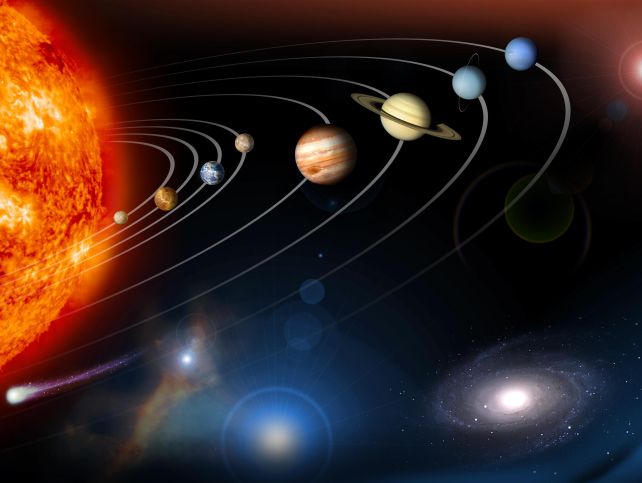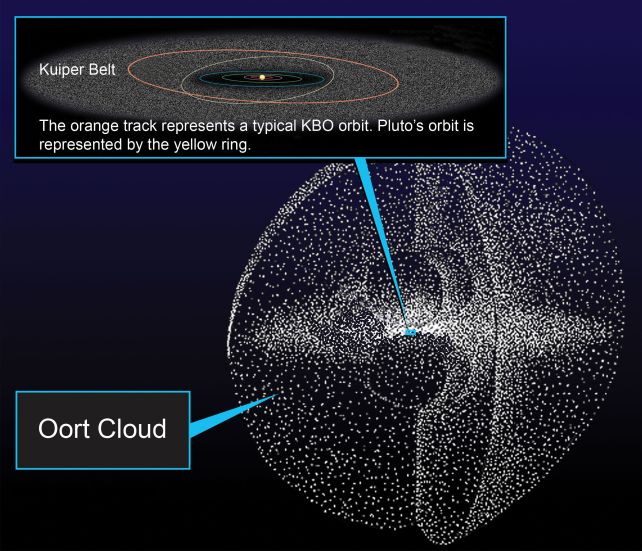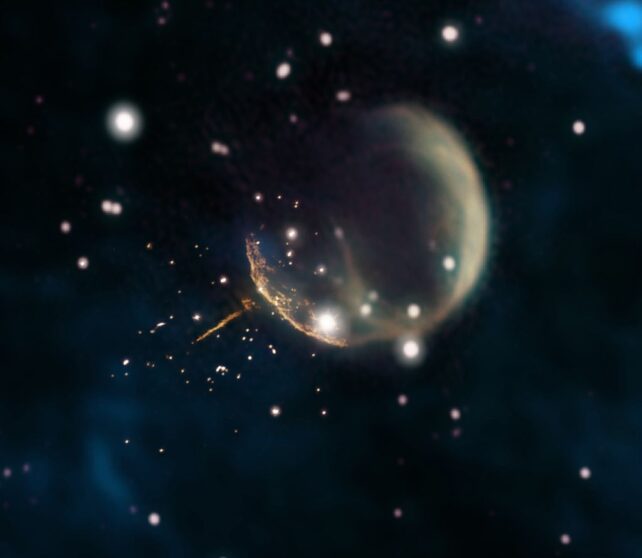The remnant of a dead star predicted to cannonball through the outskirts of the Solar System is going to do no such thing after all.
On reexamination, a white dwarf star just 36 light-years from Earth named WD0810-353 has turned out to be pretty normal. Its only claim to strangeness is its powerful magnetic field, according to a team of astronomers led by John Landstreet of the Armagh Observatory & Planetarium in the UK.
It's this magnetic field, the researchers say, that led scientists to misinterpret the trajectory of the star through the Milky Way galaxy. Their findings, accepted into The Astrophysical Journal, are available on preprint server arXiv.
Nevertheless, WD0810-353 is interesting in and of itself, and could help scientists better understand how white dwarf magnetic fields evolve as they cool.
The Solar System doesn't exist in isolation. It belongs to a vibrant and fascinating stellar community, with every object on its own orbit or path around the galactic center. Some of those paths could result in encounters with other stars – including our Sun.

If another star does have a close encounter with our Solar System, it could produce some pretty disruptive results, so astronomers are keen to figure out which stars, if any, are on such a trajectory.
A paper published earlier this year, written by astronomers Vadim Bobylev and Anisa Bajkova of the Russian Academy of Sciences in Russia, details a handful of candidates for close encounters in the future.
The most interesting of those was a white dwarf named WD0810-353. Using data from the Gaia mission, Bobylev and Bajkova calculated WD0810-353 is traveling at a blistering 373.7 (232 miles) kilometers per second.
They also calculate that, in just 29,000 years, WD0810-353 is going to pass within 0.49 light-years of the Sun. That's a distance of just 31,000 astronomical units, which would bring the white dwarf within the Oort Cloud – a population of small, icy bodies estimated to orbit near the Solar System's boundary – scattering the frozen blocks towards the inner Solar System as comets.
It's definitely an intriguing prospect, and one that has significant bearing on the system's future.

However, there are some problems with this finding. The Gaia data has given us the most accurate, three-dimensional map of the Milky Way to date, but there are significant limitations when it comes to using that data to calculate the velocities of white dwarfs.
In fact, a follow-up study conducted by astronomers Raúl de la Fuente Marcos and Carlos de la Fuente Marcos of the Complutense University of Madrid in Spain found that, while the white dwarf does appear to be headed towards the Solar System, its velocity was way off. Their recalculation, based on the hydrogen alpha line in its spectrum, found WD0810-353 was moving at an absolutely insane speed of more than 4,200 kilometers (just over 2,600 miles) per second.
Events in space are often violent, especially when stars reach the bottom of their fusion fuel reserves, resulting in explosions that kick the remnant cores at high speed across the galaxy.
White dwarfs are such remnant cores for stars lower than around 8 times the mass of the Sun (more massive stars collapse into neutron stars and black holes), and are often yeeted across the galaxy at high speed by uneven explosions; but we've never seen a runaway star even close to that fast.

But, the Spanish astronomers noted, there was another possibility. They compared WD0810-353 to other white dwarfs with similar spectra using non-Gaia data and found a much more sedate velocity of around 60 to 70 kilometers per second.
Both of the new velocities, fast and slow, would rule out a close encounter between our Solar System and WD0810-353 – but which is it?
This is where Landstreet and his colleagues, Eva Villaver of the Astrobiology Center in Spain and Stefano Bagnulo of Armagh Observatory & Planetarium, pick up the trail. It's possible, they note, that a powerful magnetic field could distort the spectrum of a white dwarf, so they obtained new spectra, and performed new analyses to derive its magnetic field.
They found that the hydrogen alpha line was strongly shifted towards the bluer part of the spectrum by the white dwarf's powerful magnetic field. This can make the star appear as though it is moving towards us, since this movement can make light wavelengths appear to compress and shorten towards the blue range, a phenomenon known as blueshifting.
In this case, Landstreet and his colleagues found the blueshift results in an illusion of motion. The velocity of the star, they found, is closer to around 83 kilometers (52 miles) per second. That means it isn't a hypervelocity or runaway star; and it's not going to run into the Oort cloud in 29,000 years, or, indeed, at all.
"Nevertheless, WD0810-353 is an intrinsically very interesting star," the researchers write.
"It is one of the closest strongly magnetic white dwarfs to the Earth. With an age of almost 3 billion years, it is entering the phase of its cooling life during which very strong magnetic fields emerge to the surface of middle aged white dwarfs. It appears to have a fairly complex distribution of local field strength over the visible surface. It will certainly be worthwhile to carry out further spectropolarimetric monitoring and more detailed modeling of this object."
The team's paper has been accepted into The Astrophysical Journal, and is available on arXiv.
